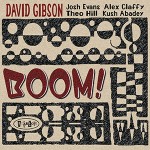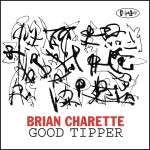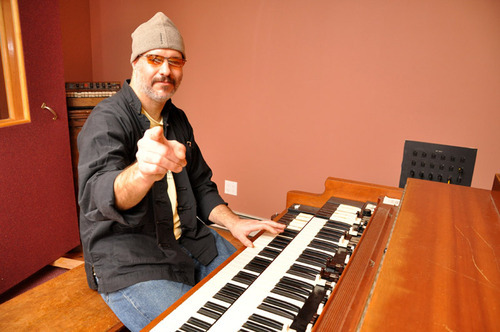Trombonist David Gibson’s Boom!—his sixth leader date, and third release on the Posi-Tone imprint—is something of a fresh start. His two previous releases—A Little Somethin’ (Posi-Tone, 2009) and End Of The Tunnel (Posi-Tone, 2011)—were cut from the same cloth, as each largely focused on funk, soul jazz, and swing; both albums also featured the same quartet—Gibson on trombone, Julius Tolentino on alto saxophone, labelmateJared Gold on organ, and Quincy Davis on drums. Now, Gibson returns with a new group—a winning quintet—that’s more interested in straight-ahead statements than head-bobbing constructs.
Some of the material presented here, along with the men that present it, brings out the bolder side of Gibson. The trombonist allies himself with intrepid players like trumpeterJosh Evans, who occasionally carries the fire of Freddie Hubbard and the spirit ofWoody Shaw in his horn, and pianist Theo Hill, who works his way through this music with firm-handed brilliance. Then there’s the steady-as-a-rock bass work of Alex Claffy and the swinging-turned-swatting drums of Kush Abadey to contend with. When all five men fire on all cylinders, (“The High Road” and “Eyes Of Argus”), the results are breathtaking. But strength doesn’t define this group. This is a quintet that’s just as likely to float (“The Dance”), create a vibe tune (“Grass Fed”), or move with a spring in its step (“Persephone”) as it is to muscle its way through a piece.
Gibson wrote eight of the ten songs on this record, covering everything from edgy burners to groove music (“Boom!”), but he chose to close the album with a pair of dissimilar covers—”The Cupbearers,” a jazz standard that’s often associated with pianist Tommy Flanagan, and “Change The World,” a pop piece that Eric Clapton and Babyface delivered to the masses. The former cooks and kicks while the latter moves slowly, closing out the album in earthy fashion.
Track Listing: The High Road; Rare Truth; Grass Fed; Eyes Of Argus; Persephone; Empathy; Boom!; The Dance; The Cup Bearers; Change The World.
Personnel: David Gibson: trombone; Josh Evans: trumpet; Theo Hill: piano; Alex Claffy: bass; Kush Abadey: drums.





